Just because a brand is considered to be prestigious doesn’t mean it can’t have a wallet-friendly offering in its line-up.
That’s exactly the case for these two vehicles â€" the 2015 Audi A1 1.0 TFSI and the 2015 Mini 5 Door One â€" because the pitch behind these compact five-door hatchbacks is to offer an affordable entry point to each of their respective ranges.
How are the prices kept low?
Well, the updated Audi A1 range now adopts a 1.0-litre three-cylinder turbocharged petrol engine as the base model in that line-up, and the Mini 5 Door also has a down-powered 1.2-litre triple.
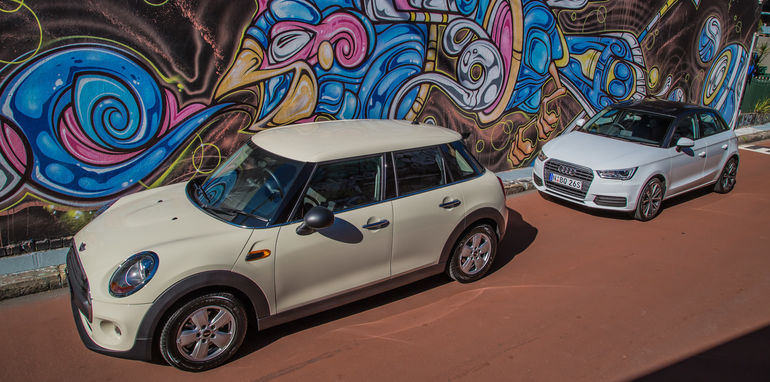
But that’s not to say either of these models is stripped of all the desirable equipment that up-and-coming prestige brand buyers might want. However, there are plenty of option boxes to tick…
So far in 2015 the Mini range has the upper hand in terms of sales volumes (1313 units sold of the hatch/Clubman versus 826 A1s sold), but the updated small Audi has only just launched here. We’d expect the battle for sales to even out a bit towards the end of this year.
So, which should you buy? Let’s take a closer look at the two to find out.
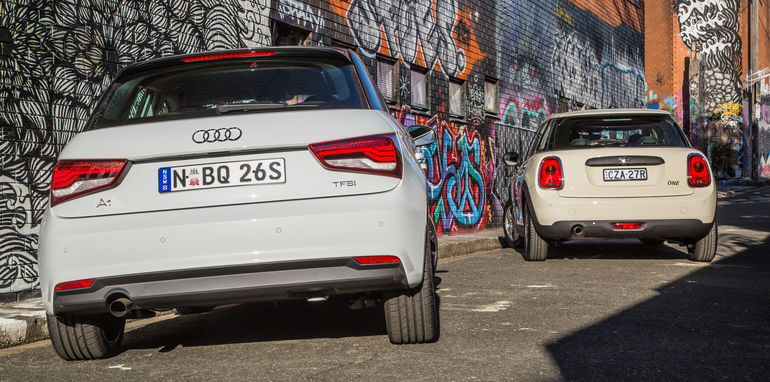
Pricing and equipment
The word “affordable†is very much subjective, but if you’re budgeting about $30K on a little city runabout with some premium qualities, these two have you sorted.
The Audi A1 1.0 TFSI starts at $26,900 plus on-road costs for the five-speed manual version, and while adding an auto can usually incur a cost of about $3000, the A1 can be optioned with a seven-speed dual-clutch S tronic automatic for $1350, pushing the price up to $28,250 plus costs.
That puts the Audi at a slight advantage over the automatic Mini 5 Door One, which is priced at $28,400 plus on-road costs, but the six-speed manual Mini is a bit of a bargain at $26,050 (or you could say that the six-speed auto’s a bit steep given that $2350 premium!).
In terms of equipment, the Audi comes standard with a fair list of kit, including 15-inch alloy wheels, and it has a 6.5-inch colour media screen that doubles as navigation screen if you option that tech.
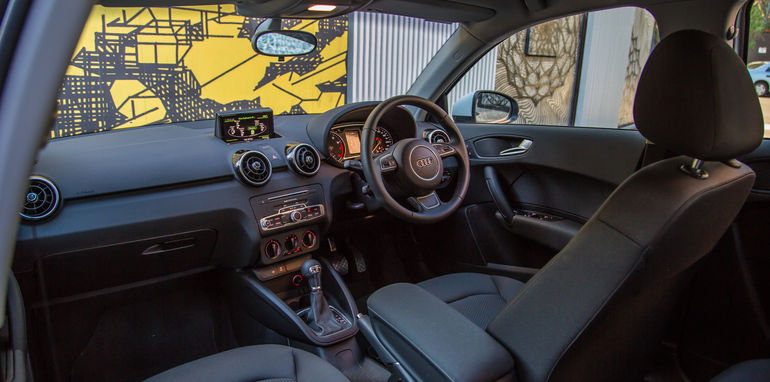
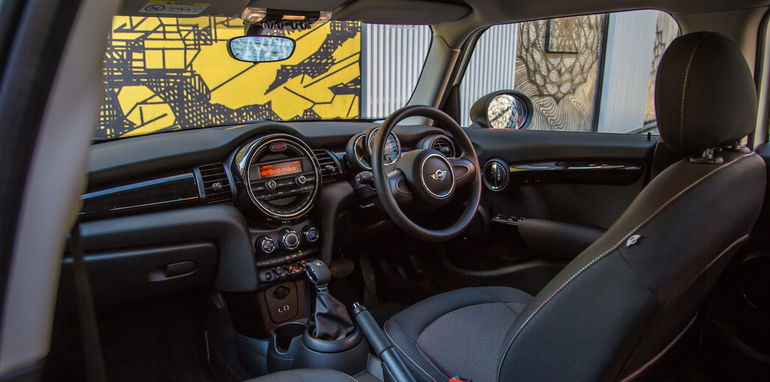
Pictured: Audi A1 (top); Mini One (bottom)
Both come with rear parking sensors, Bluetooth phone connectivity and auto-off lights with daytime running lights.
Over the Mini, the Audi has auto wipers and cruise control â€" it’s mad to think Mini doesn’t have that as standard. Further, where Audi offers Bluetooth audio streaming as standard, Mini asks buyers to pay for it â€" which is arguably the biggest rort going.
However, the Mini fights back with push-button start and keyless entry, but makes do with less enticing 15-inch steel wheels with hubcaps â€" but they could be a godsend if you prefer to park using the gutter as a guide. (Our car had optional 15-inch alloys.)
Both have cloth trim (Firework for the Mini, Zeitgeist for the Audi), but the Audi feels more premium inside due to its pop-up colour screen and multi-function steering wheel with audio controls. The Mini’s rubbery wheel makes the cabin feel very budget.
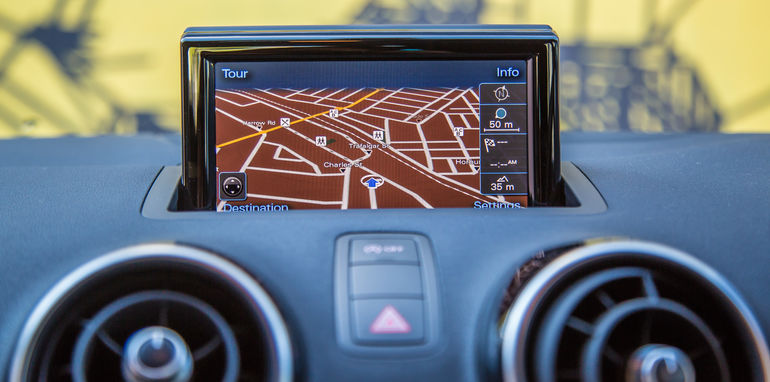
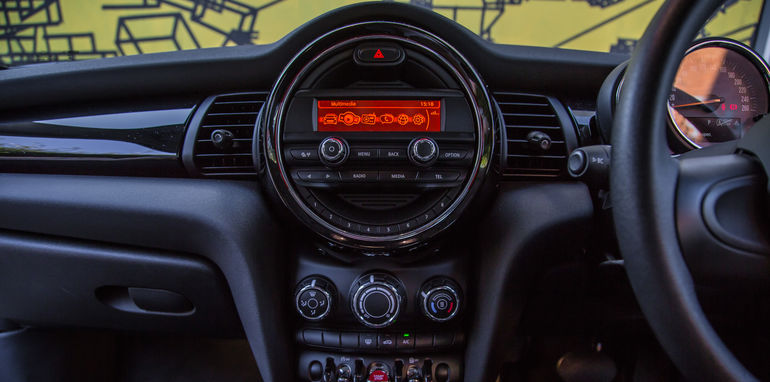
Pictured: Audi A1 (top); Mini One (bottom)
Further, the Mini makes do with a simple analogue stereo head-unit with orange backlighting, and the sound system itself only has four speakers. The Audi’s unit has eight speakers as standard and that colour screen.
As for safety kit, both cars have six airbags (dual front, front side and full-length curtain), electronic stability control, and both have a digital speedometer. Both have tyre pressure monitoring, and the Mini has run-flat tyres with a repair kit where the Audi has a space-saver spare.
As you might expect from prestige brands, there are options aplenty available for these cars, which quickly see that ‘affordable’ tag thrown out the window.
For instance, our A1 had $6170 worth of extras added. They included metallic paint ($990) with the contrasting roof colour ($700), the Style Package with xenon plus headlights, LED DRLs and choice of 17-inch alloy wheel designs ($1990) and the Technik package with Audi’s MMI navigation plus and an upgraded sound system ($2490).
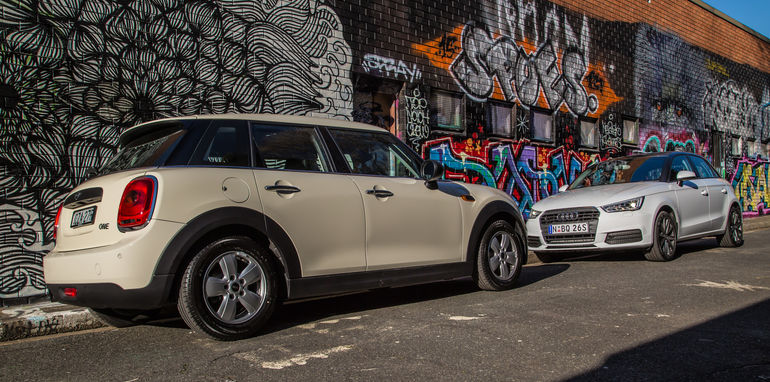
Other options you can choose for the A1 include a sunroof ($1850, reduces seating capacity from five to four) and a massive 14-speaker Bose stereo ($1450).
The Mini One we had was modestly optioned. It had the Salt package (floor mats, passenger seat height adjustment, the storage package and interior lights package â€" $637); 15-inch alloy wheels ($975) and piano black interior trim finishes ($325).
Interior
Both of these cars are small â€" we know that just by looking at them â€" and there’s very little in it in terms of the actual physical measurements.
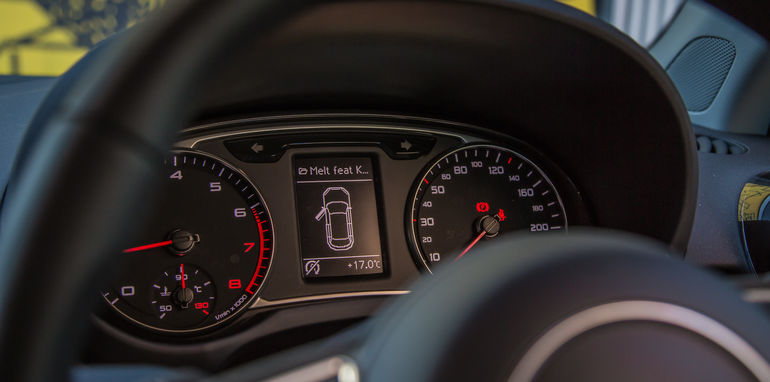

Pictured: Audi A1 (top); Mini One (bottom)
The Mini spans 3982 millimetres long, 1727mm wide, 1425mm tall and rides upon a 2567mm wheelbase. That positions it longer, taller and with more millimetres between the wheels than the Audi, though the A1 is wider (3973mm long, 1746mm wide, 1422mm tall, 2469mm wheelbase).
The boot space on offer is tight in either car, although the Audi has a marginally smaller cargo area (270 litres with the rear seats up/920L with them folded flat) than the Mini (278L seats up/941L seats flat).
Storage isn’t strong for the Mini, with no bottle holders in the doors, the rear door pockets are tiny, but it does have two map pockets. There’s no rear arm-rest, either.
The Audi has bigger door pockets all around including bottle holders front and rear, but it misses out on map pockets altogether.
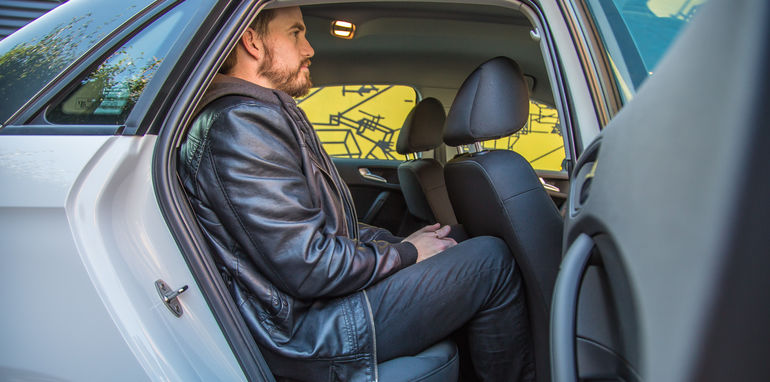

Pictured: Audi A1 (top); Mini One (bottom)
In terms of interior design, both of these cars are designed to appeal to younger buyers, but they take quite different paths to achieve their goals.
For example, the Mini’s interior is more basic â€" a lot more basic â€" where the Audi’s cockpit is notably more upmarket at first glance, despite the Audi making do with hard plastics on the doors where the Mini has soft-touch material. The Mini also gets funky technicolour stitching on the seats (see image above).
Most of that comes down to the Mini’s old-school stereo interface, which is similar in disposition to the sort of thing you find in a $12,000 Suzuki Celerio.
It’s a simple looking stereo without a touchscreen, and while connecting your phone is simple enough to do, the Mini â€" shamefully, and unlike the Celerio â€" doesn’t have audio streaming. The Audi has that tech.
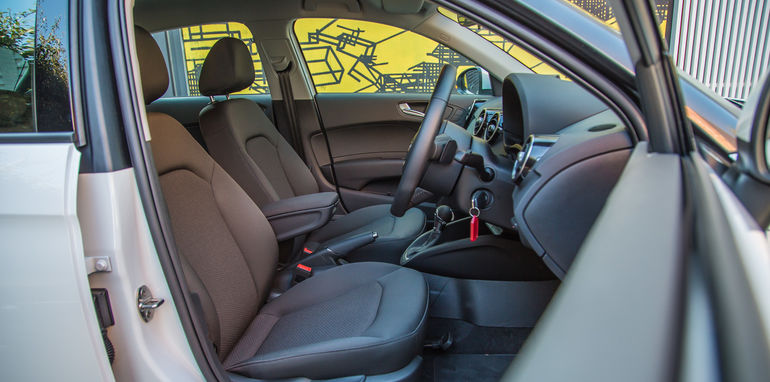
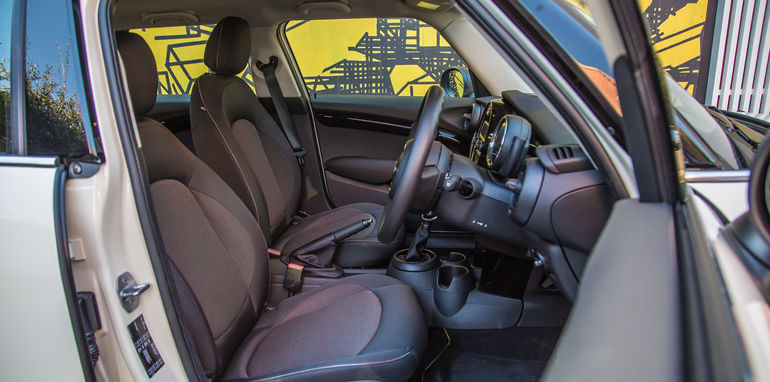
Pictured: Audi A1 (top); Mini One (bottom)
Not only does the Mini miss out on that very youth-oriented system, it also lacks steering wheel-mounted audio controls, which the Audi has.
Indeed, the Audi’s pop-up media screen and its added tech is just the start in terms of the ways its interior is superior to the Mini.
Engine and transmission
Three-cylinder engines may have been the way of the budget end of the market when the Daihatsu Charade was around â€" and yes, the current Celerio does have a triple, too! â€" but such drivetrains are also becoming a key part of luxury brands’ ranges.
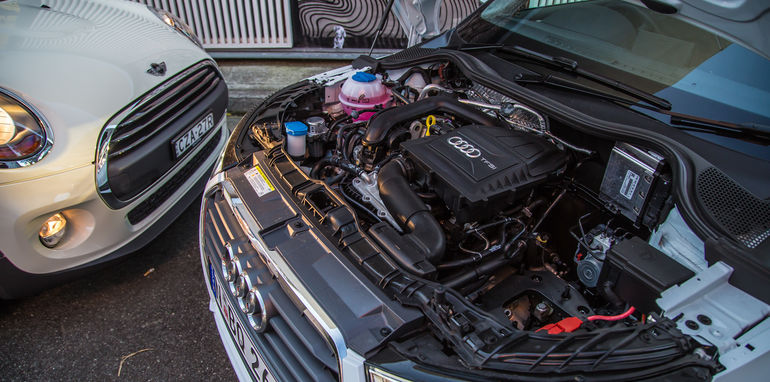
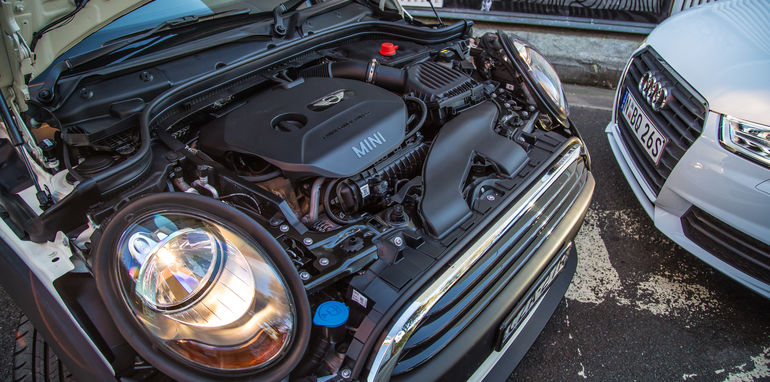
Pictured: Audi A1 (top); Mini One (bottom)
The reason is that they’re cheaper to make (lighter in material terms) and also help pull down the fleet emissions averages of those makers because they can claim much lower fuel use than bigger, heavier four-cylinder engines.
Both the Audi and the Mini are fitted with new-generation three-cylinder engines in different capacities.
The Audi’s is the smaller of the two, a 1.0-litre three-cylinder turbocharged engine with 70kW of power (between 5000-5500rpm) and 160Nm of torque (from 1500-3500rpm).
The Mini’s is a 1.2-litre turbocharged triple that uses its slightly bigger capacity to its advantage, with more power (75kW at 4000rpm) and more torque (180Nm at 1400rpm) than the Audi.
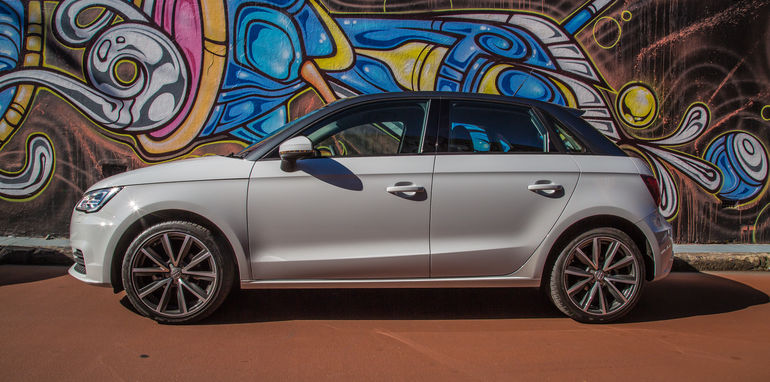
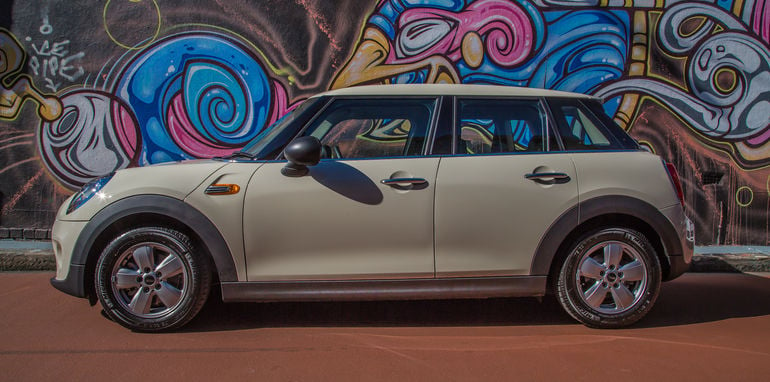
Pictured: Audi A1 (top); Mini One (bottom)
As you can probably tell based on where peak power occurs, the Mini is a more burly engine that prefers to get the job done low in the rev-range, and as such it exhibits less low-rev lag than the Audi.
The A1 is more free-revving and more refined in its nature, but there’s some lag down low in the rev-range.
Both have the choice of cheaper manual models as mentioned above, but buyers of these sorts of hatches overwhelmingly choose automatic gearboxes.
While the Mini’s is a conventional torque converter automatic, it exhibits a similar lag sensation low in the rev range to the Audi’s dual-clutch unit, albeit not quite as annoyingly. Still, both cars showed some hesitation from a standing start in bumper-to-bumper traffic.
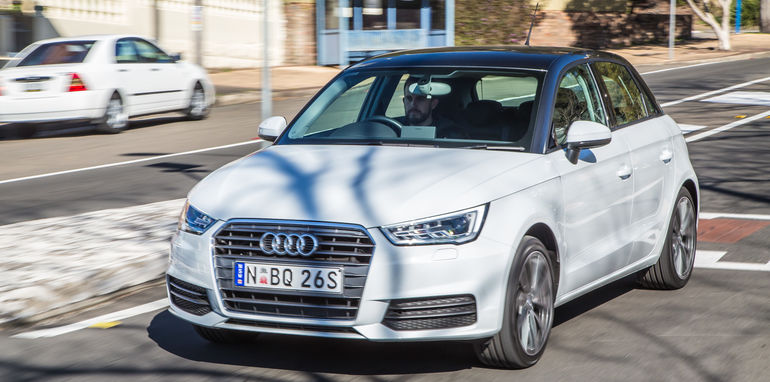
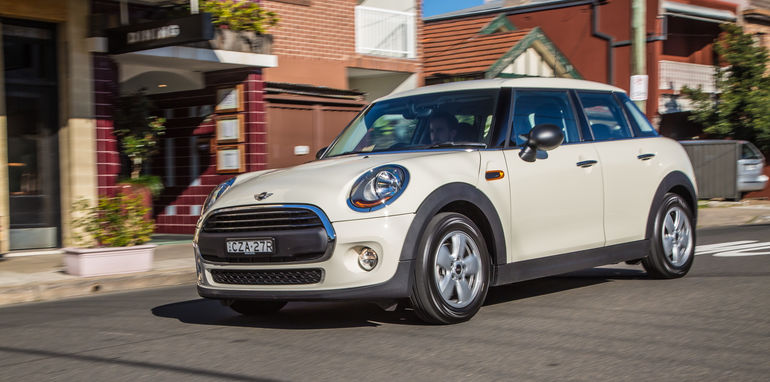
Pictured: Audi A1 (top); Mini One (bottom)
To help save fuel, both have engine stop-start that cuts the engine when you’re sitting in traffic, and the Mini’s system is a little quicker to re-fire than the Audi’s.
While the Mini’s transmission is a tad better at low speeds than the Audi, when you’re moving a bit quicker the Mini’s gearbox is not as quick or smooth at swapping cogs as the Audi’s transmission, which is fast-thinking and clean-shifting. The seven-speed dual-clutch in the Audi makes for a more relaxed highway drive than the six-speeder in the Mini, too, as the engine idles a little lower.
You may have also come to the conclusion that the Mini should be quicker, and it is. With extra power and also just a little extra weight (it weighs 1175 kilograms to the Audi’s 1165kg mass), the Mini can hit 100km/h from a standstill in a claimed 10.5 seconds â€" a full 0.6sec faster than the Audi.
However, the Audi is more efficient in terms of claimed use, with the German brand stating its car will use 4.4 litres per 100 kilometres, where the Anglo-German model is claimed to use 5.1L/100km. During our urban-biased testing the gap was a little smaller, with the A1 sipping 6.9L/100km and the Mini using 7.0L/100km.
On the road
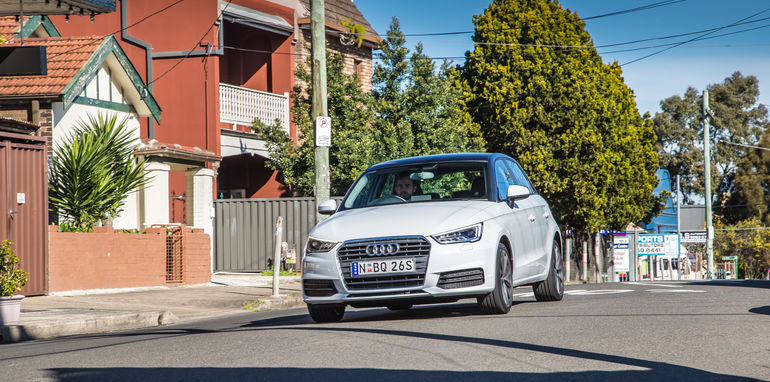
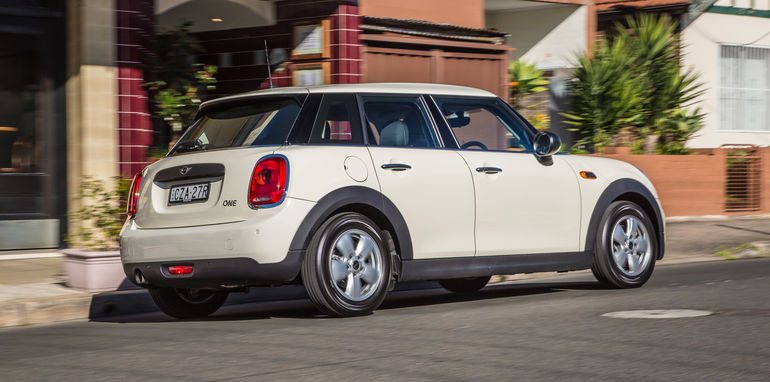
Pictured: Audi A1 (top); Mini One (bottom)
Both of these little jiggers come from good stock in terms of road manners. Mini has long marketed its wares as offering the “go-kart feelingâ€, tight suspension that means the car is fun to drive fast; where Audi is more focused on a compromise between dynamism and comfort.
That’s exactly how it played out in our test, too â€" the Audi is more comfortable, and the Mini is more fun.
For the Audi, the suspension irons bumps out more comfortably than the Mini over little lumps and bumps on the road, although it can be crashy over sharp edges â€" that likely has something to do with the larger, heavier 17-inch wheels and lower-profile tyres.
The 10.6m turning circle means the A1 is more laneway-friendly than the One, which has a 11.0m turning circle, and because the Audi’s steering is much lighter at low speeds it takes a lot less effort in such situations, too.
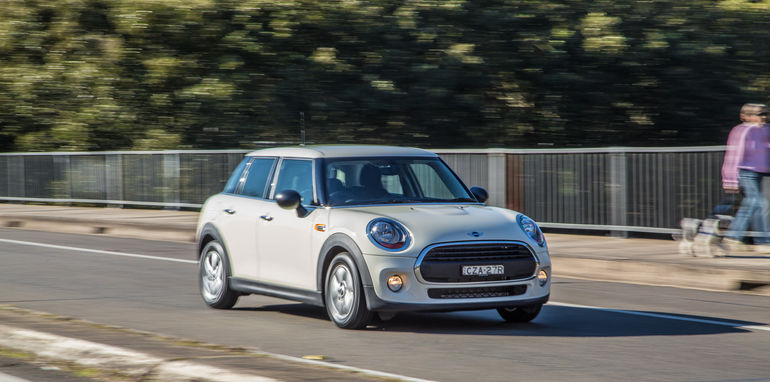
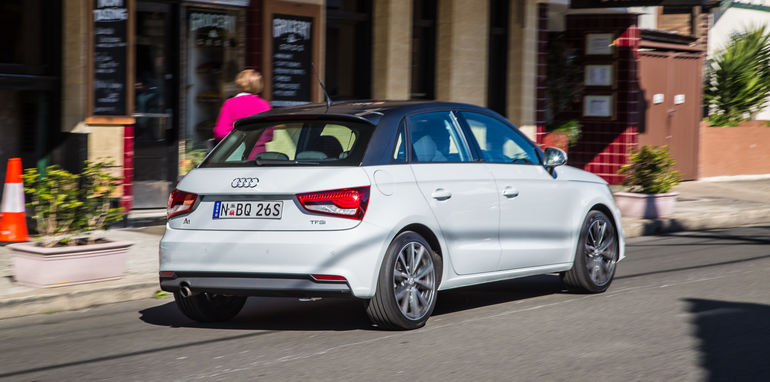
Pictured:Â Mini One (top); Audi A1 (bottom)
While the Mini’s meaty steering is great fun at higher speeds â€" it offers better driver engagement than the Audi, and you really do feel like you’re driving a go-kart because it’s so direct and rapid to react â€" it is more cumbersome than the A1’s when you’re trying to park, which you’re likely to spend a lot more time doing in a car like this.
The Mini feels more planted through the bends, where the Audi feels lighter and more agile and chuckable. The One’s firm suspension setup means it is more rigid over bumps, busier on the highway and harder around town, but it doesn’t crash like the Audi â€" rather, it thuds and thumps into bumps. Still, if you spend a lot of time in your car, the Audi is the more relaxing ride.
The Mini is louder on the road, too. You notice a lot more noise from the road and wind entering the cabin, not to mention the thrum of the three-cylinder engine. While the Audi isn’t superbly quiet, it is more hushed than the Mini, which adds to the comfort factor.
Ownership
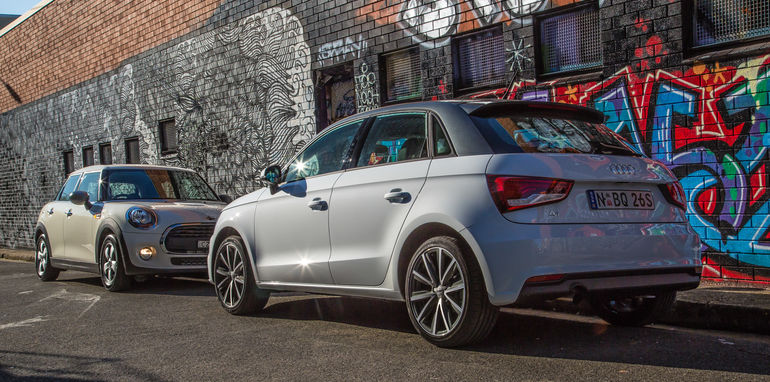
Audi offers a three-year, unlimited kilometre warranty for all of its models.
There’s also a three-year/45,000km service plan that buyers can pre-purchase to cover maintenance on their car over the first few years of ownership. The program costs $1580.
Mini also offers a three-year, unlimited kilometre warranty, and there’s a similar pre-purchase service program that buyers can choose, called Mini TLC.
The plan is designed to cover the scheduled servicing costs for five years or 70,000km (whichever occurs first), and in its most simple form it starts at $980 for that period of cover, making it a more enticing long-term car.
Verdict
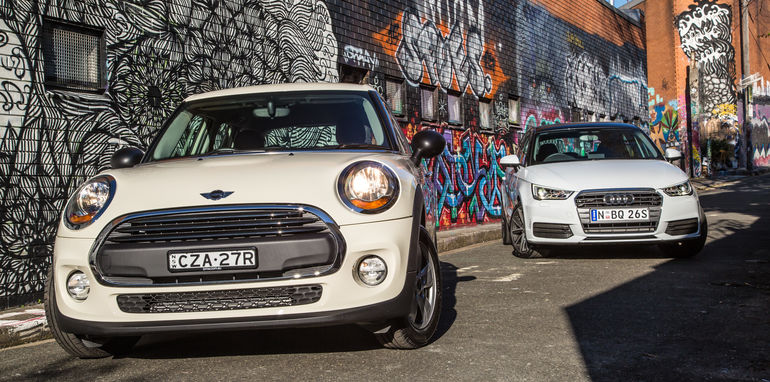
This was a close one.
The Mini is a really likeable car â€" it’s more fun to drive hard than the Audi, and it’s also arguably better to pilot around town at low speeds. There’s every chance it could well put a bigger smile on your dial on a daily basis than the A1.
However, we can’t help but frown at some of the equipment that’s missing from the Mini’s standard goodies list.
That’s enough to give the A1 the win here. It is a more luxury-focused offering, a car that feels like a big premium model that’s been shrunken down to a compact size.
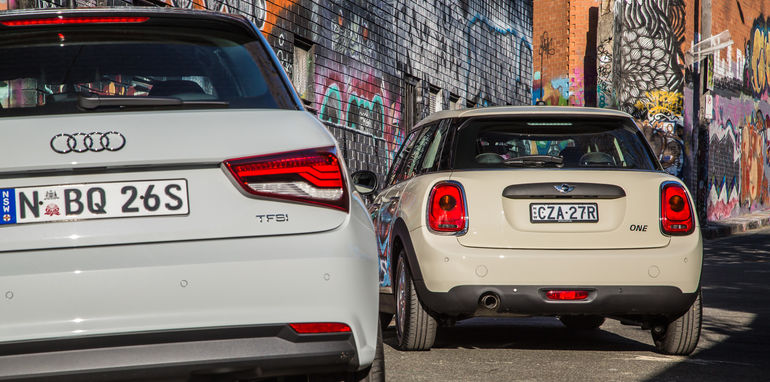
And thankfully, unlike Mini, Audi hasn’t shrunken the standard equipment list too much. The A1, even in this base model specification, really is a wallet-friendly prestige car.
Click the Photos tab above for more images by Glen Sullivan.
Comments
Post a Comment